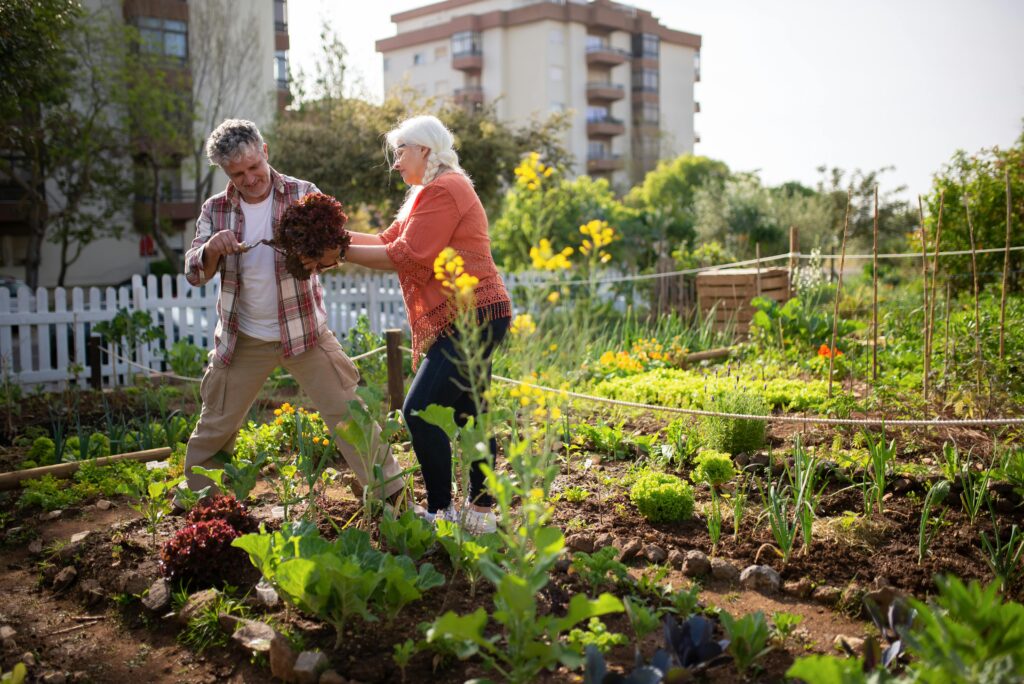Have you ever thought about growing your own food while building a sense of community? Community gardening is a fantastic way to do just that! Starting a community garden not only brings fresh, organic produce to your neighborhood but also strengthens community bonds. This guide will show you how to create a successful organic community project that everyone can enjoy.
What is a Community Garden?
A community garden is a shared space where neighbors come together to grow fruits, vegetables, and flowers. These gardens can be found in various locations, such as vacant lots, schoolyards, or parks. They provide fresh food, encourage healthy eating, and offer a space for people to connect with nature and each other.
Planning Your Organic Community Garden
Finding the Right Location
The first step is to find a good spot for your garden. Look for places that get plenty of sunlight—ideally 6–8 hours a day. Check for access to water, and make sure the area feels safe and welcoming for everyone.
Gathering Community Support
Next, gather support from your neighbors and friends. You can hold an informal meeting to discuss the idea and get people excited. Use social media or local bulletin boards to spread the word. Building a team of interested individuals will make the process smoother.
Securing Funding and Resources
To start your garden, you’ll need some funds for soil, seeds, and tools. Consider applying for local grants or partnering with nearby businesses that may offer donations. You can also host fundraisers, such as bake sales or community events, to raise money for your project.
Designing and Building the Organic Community Garden
Layout and Structure
Once you have support, design the layout of your garden. Decide whether you want individual plots for each person or shared beds. Make sure to leave pathways for easy access. Use eco-friendly materials for the garden beds to align with your organic goals.
Soil Preparation
Good soil is key to a successful garden. Test the soil quality and add organic compost to enrich it. This will help your plants grow strong and healthy. You can also start a compost pile to create your own organic fertilizer.
Selecting Crops
Choose crops that are easy to grow and suitable for your climate. Some great options for community gardens include tomatoes, lettuce, and herbs. You can also plant flowers to attract pollinators. Consider companion planting to help your garden thrive naturally.
Engaging the Community and Sustaining Involvement
Community Events and Workshops
Host events to keep the community engaged. Plan workshops on topics like organic gardening techniques and composting. Seasonal events, like planting days and harvest festivals, can bring everyone together and build friendships.
Creating a Maintenance Schedule
To keep the garden healthy, create a maintenance schedule that everyone can follow. This includes watering, weeding, and harvesting. Rotating responsibilities ensures that everyone contributes and feels involved.
Managing Challenges
Community gardens can face challenges, like pests or theft. Encourage members to use organic methods for pest control. Establish clear guidelines and a support system to manage any issues that arise.
Expanding the Community Garden’s Impact
Incorporating Education
Use your garden as a learning tool. You can create informational signs about plants and gardening techniques. Partner with local schools to get kids involved in gardening. This helps teach them about food sources and the environment.
Sharing Produce
Encourage the community to share their harvest. Set up a local food pantry or donate surplus produce to those in need. This fosters goodwill and strengthens community ties.
Promoting Growth
Think about expanding the garden in the future. You can add features like a compost station or a flower section. Document your garden’s journey through social media or a community newsletter to inspire others.

FAQs
1. How do I start a community garden?
Start by finding a suitable location, gathering community support, and securing funding. Plan the layout and decide on crops to grow.
2. What are the benefits of community gardening?
Community gardening provides fresh produce, promotes healthy eating, and strengthens relationships among neighbors.
3. How can we keep volunteers engaged?
Organize regular events, create a maintenance schedule, and rotate responsibilities to keep everyone involved and motivated.
Conclusion
Starting a community garden is a rewarding way to bring people together while promoting healthy, organic gardening practices. By following the steps outlined in this guide, you can create a vibrant space that benefits your entire neighborhood. Gather your friends and neighbors, and take the first step toward building a greener, more connected community! Now is the time to dig in and start your community gardening journey!
To learn more about organic gardening, keep visiting the top organic gardening blog.
